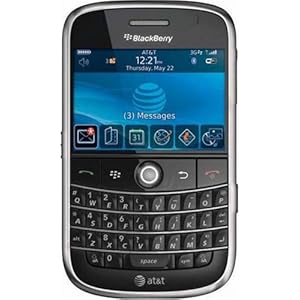RIM - Why change is a delicate subject
RIM: Why change is a delicate subject
Chances are, you’re not like me and enjoy a challenge when it comes to consumer electronics. Jailbreak this, install custom apps that, but in reality to most of the world the utility of a device is simply what they have right in front of them. So when changes come about, you have a crowd dichotomy – one set of people who like the new and another who suddenly act like children and pout about how things aren’t like they used to be. Perfect example is Facebook - I don’t believe a single person likes that sidebar.
So one of the companies who needs to check on their identity these days is Research In Motion LTD (NASDAQ: RIMM), who recently announced they were cutting 2000 jobs and making executive reassignments yesterday, a total of 11% of its employees being laid off. The problem here is quite obvious, RIM had a huge chunk of marketshare before/during the early days of the iPhone, and didn’t seem to act on it in any way that it would benefit the consumer.
So what does this have to do with change? I can safely say that the iPhone release model is a pretty good example of reminding your customers that there’s more to the story than making it “bigger” and “improved” and just slapping the same or a higher price tag on it. Every year you get a list of features, most of them explained in detail, and it’s evident that no matter how much time it takes it’s all “what the consumer wants” and nothing more. And a release date to match it. I can’t believe how many companies don’t attach one of those and then are surprised that nobody wants their product because consumers don’t know it’s even on the market.
Huge media events aside, let’s take a quick look at the evolutions of these in pictures. For consistency’s sake I used the high-end models of Blackberries.
Year Apple RIM
2007


2008


2009
Same as above (in appearance)

2010


2011
Same as above

While I don’t have the time to make this table of images look good, I can tell that this progression makes it look like Blackberry has changed a lot more. But the truth is, in the eyes of most consumers Blackberry was never “fun”. iPhone went places no phone ever went before, being the first to have a stylus-less touch screen for input and that was a big factor into its driving success. Aesthetics suddenly became very important which lead to so many interface lookalikes sprouting up in the year 2008, and this is probably what prompted Microsoft with its Windows Phone 7 design. So the chart up there… means absolutely nothing.
In an effort to recapture that side of the market, the Blackberry Storm came along…. and pretty much killed their shot at that. While trying to be both friendly to people who wear suits or jeans, it was plagued with issues and had that nasty SureType ‘technology’. See, they were trying to be the same but different. It doesn’t always work like that. Android’s widgets seem a bit gimmicky but they did provide utility to the user, and thus a selling point.
Again, their competing Playbook tablet tried to cater to all audiences but failed to capture the market of the average Joes. How serious can you be when checking your email requires a different device from the same company to be connected? One good thing did sprout from this and it was the use of QNX, which is rumored to replace the phone OS for Blackberries within 2 years. But is anybody going to care?
I know I’ve spouted way too much Apple drivel than I should have. Which makes it important for me to state this isn’t my view as much as it is the market’s. I feel in this situation that Justin Long reprises his part on the iPhone, and John Hodgeman takes over the corporate email hedging duties in this classic duel between photo slideshows and spreadsheets. But change is always in the air, and with the competition eclipsing them RIM took the wrong pill.
At least Nokia made a leap of faith.